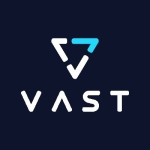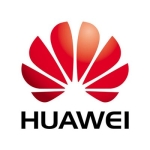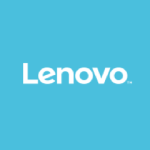What is our primary use case?
Our Nimble unit serves our corporate storage infrastructure, all running VMware on top of it. It's primarily VDI file storage and the virtual environment itself.
We have been using it for about three years and the performance has been excellent. We haven't had any outages.
What is most valuable?
Our upgrades are seamless. Whether we're adding storage, or upgrading the software, we don't take an outage for those upgrades.
Also, InfoSight does exactly what it needs to do. It tells us when we have problems and if we need to move things around. Mostly we use it for capacity planning so we can get the forecast of when we're going to be out of space and order more disk expansion before we run out of actual space.
What needs improvement?
The only thing that I can really compare Nimble to is all-flash because, right now, Nimble is a hybrid solution. I would like to see them come out with an all-flash alternative.
I'd also like to see them incorporate tools that let me get granular with the VMs. I want to see an individual VM, I want to Snapshot and recover an individual VM. Those are the kind of daily operations features that I'd like to see.
For how long have I used the solution?
One to three years.
What do I think about the stability of the solution?
Stability is great. We have never had a problem with the arrays.
What do I think about the scalability of the solution?
In terms of scalability, it's excellent. I think we have four of them now.
How are customer service and technical support?
We have used technical support. Everything has been solved really quickly. Because I'm the vice president, I don't do the engineer's work but I would hear about it if there was a problem.
In terms of how technical support compares to support provided by other companies, our other source product is EMC and it's very difficult to be worse than EMC.
Which solution did I use previously and why did I switch?
The switch was because of budgetary constraints. I knew I couldn't put in an EMC array in the initial solution that we used before, which was for VDI. If I had tried to deal with the EMC, I would not have gotten the performance and it would have cost a lot more.
So we had to look outside the box. We chose Nimble over Tintri at the time, because Tintri's solution, while very good - with the things I was talking about, like granular VM, etc. - it's a footprint that you have to buy all at once. For the Nimble, I buy the unit and I can keep adding to it. With Tintri you have to pick a 13-terabyte or a 45-terabyte and when you run out of that, you buy another 45-terabyte. To me, it just didn't seem as expandable.
In terms of criteria for selecting a vendor, other than scalability and price, the key is performance. The bar was set at EMC. EMC just adds flash disks to a standard array and accelerates things somewhat, but it really doesn't get you to where you need to be. With EMC, you need to buy a lot of disks, you need to get into the 200s for spindle count. With any of the newer hybrid solutions - Tintri, Nimble, Pure - those are all all-flash solutions or hybrid solutions that take advantage of flash the way it's supposed to be.
How was the initial setup?
I'm based out of Southern California. We first implemented it in Virginia, so I flew in to meet an engineer to complete it. By the time I had flown in and got to the data center, he was already done. I expected it to take several hours but it was more like an hour, and most of that hour was unpacking it out of the box.
Compared to EMC, you can't install EMC's products yourself, and it's days of implementation.
What was our ROI?
If we had stuck with EMC, we would have spent a lot more. We have EMC in-house, we have a bunch of them. Switching to Nimble saved me millions of dollars over the past three years.
Which other solutions did I evaluate?
Our production environment runs off of Pure Storage, our corporate environment runs off of Nimble.
What other advice do I have?
I'd put Nimble at about an eight out of 10 because Pure storage reset our standard for what is absolutely the best. Pure is a whole different platform and not hybrid. I like Nimble, it's very good, it works, it's definitely cost-effective. It's not all-flash, so you don't get the performance of all-flash. But if you don't have a couple of million dollars to spend on Pure, Nimble is an excellent choice.
In terms of advice, it gets down to budget. Nimble fills a need for performance within a budget that is in the sub-million dollar range. If you're going up over a million dollars, where you can just throw money at the solution, there is Pure and there is Texas Memory Systems and all those high-end solutions. But if you want enterprise-level storage and you want a hybrid, the Nimble has served us well.
Disclosure: My company does not have a business relationship with this vendor other than being a customer.













Thanks..this review was very helpful.
I would like to know what tool you used for SAN migration from EMC to Nimble?